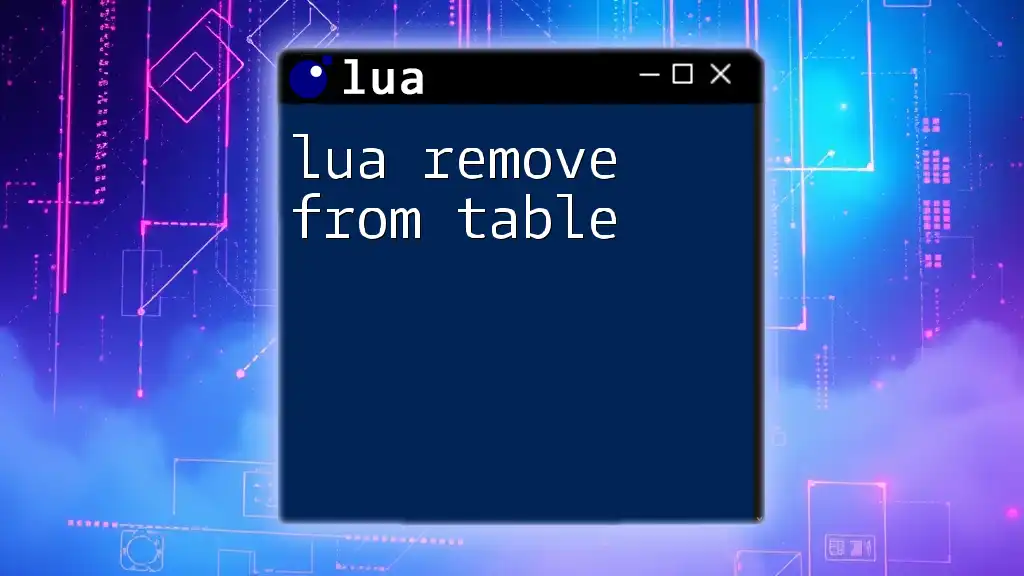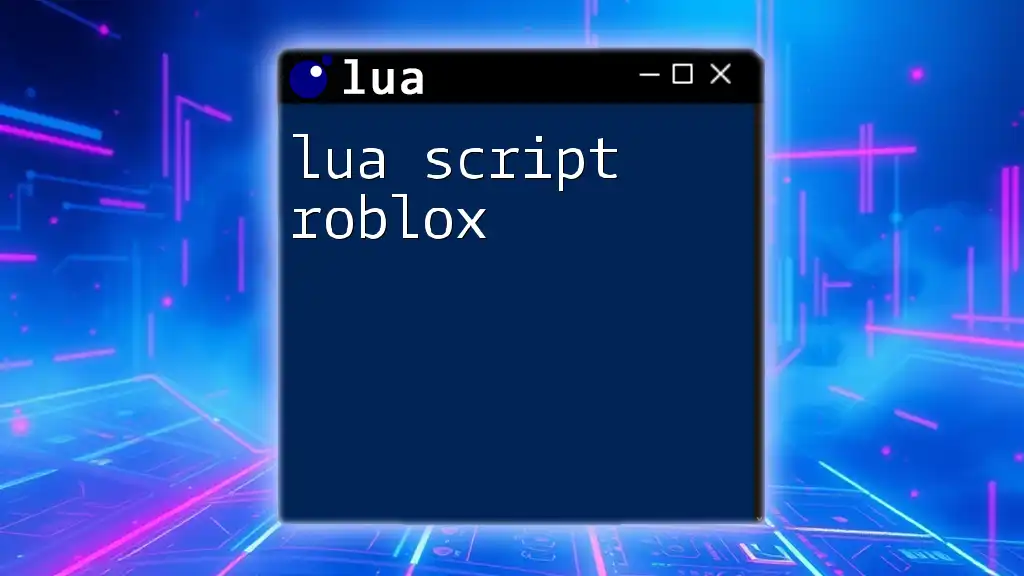A Lua `for` loop can efficiently iterate over the elements of a table, enabling you to perform operations on each element, as shown in the example below:
local fruits = {"apple", "banana", "cherry"}
for i, fruit in ipairs(fruits) do
print(i, fruit)
end
Understanding Lua Tables
What is a Table in Lua?
In Lua, a table is a versatile data structure that serves as an associative array, allowing users to group different data types together. Tables can act as arrays, dictionaries, or even objects. This flexibility makes them an integral part of the Lua programming language.
Why Use Tables in Lua?
Tables hold significant value in Lua programming due to their dynamic nature. They allow for the storage of collections of data, whether similar or dissimilar in type. For instance, when developing a game, tables can be used to hold player data, inventory items, or even configurations like game settings. This versatility comes in handy when managing complex data structures.

Basics of Iterating Over Tables in Lua
The For Loop Concept
The for loop in programming is a finite loop that iterates a specific number of times. In Lua, for loops allow developers to efficiently traverse data structures, including tables.
Types of For Loops in Lua
- Numeric For Loops: These loops allow you to iterate through numerical ranges. They are great when you have a known, fixed-size array.
- Generic For Loops: This type of loop is particularly useful for iterating through tables, including those with non-numeric keys.

Iterating Through Tables Using Lua For Loop
Using Numeric For Loop
When your table is structured as a simple array, the numeric for loop shines. Consider the following example:
local fruits = {"apple", "banana", "cherry"}
for i = 1, #fruits do
print(fruits[i])
end
In this snippet:
- The variable `i` iterates from 1 to the length of the `fruits` table (indicated by `#fruits`).
- Each fruit is accessed by its index, demonstrating the straightforward nature of numeric loops.
Using Generic For Loop
When dealing with simple arrays, the ipairs function can facilitate iteration, ensuring that the loop processes each value:
local fruits = {"apple", "banana", "cherry"}
for key, value in ipairs(fruits) do
print(key, value)
end
In this example:
- `ipairs` ensures the order of iteration is maintained for array-like tables, providing both the key (index) and value during traversal.
Looping Through a Table with Key-Value Pairs
If your table uses keys other than numerical indexes, the pairs function becomes indispensable:
local person = {name = "John", age = 30, city = "New York"}
for key, value in pairs(person) do
print(key, value)
end
Here, `pairs` allows you to access each key-value pair, enabling you to handle associative arrays efficiently. It is vital when your table has mixed types or is not strictly indexed numerically.

Advanced Iteration Techniques
Nested Tables
Tables can also contain other tables, forming nested structures. Iterating through them requires understanding how to traverse multi-layered data. Look at the following example:
local students = {
{name = "Lisa", marks = {math = 90, science = 80}},
{name = "Tom", marks = {math = 85, science = 75}},
}
for _, student in ipairs(students) do
print(student.name)
for subject, mark in pairs(student.marks) do
print(subject .. ": " .. mark)
end
end
In this case, we first access each student, then delve into their marks. This nested loop demonstrates how to handle complex data structures effectively.
Using Table Functions
In Lua, writing custom functions can enhance code reusability. For instance, you can create a function to print any table easily:
function printTable(t)
for key, value in pairs(t) do
print(key, value)
end
end
printTable(person)
This function leverages `pairs`, making it applicable to various tables, while illustrating how to encapsulate logic for better code organization.

Best Practices for Looping Through Tables
Performance Considerations
When iterating through tables, the choice of loop types can impact performance. Numeric loops are generally faster for arrays due to their predictable structure. In contrast, when working with associative arrays, `pairs` offers the flexibility needed but may introduce slight overhead.
Keep It Concise
Writing clear and concise code is paramount. Aim to avoid complex nested loops when simpler alternatives are available. This practice not only enhances readability but also simplifies debugging and maintenance.

Common Mistakes When Looping Over Tables
Mistake 1: Assuming Table Order
A common misconception is assuming that the elements in a table will maintain their order. In Lua, tables are inherently unordered, especially when using `pairs`. This can lead to unexpected outputs if not handled appropriately.
Mistake 2: Using the Wrong Iteration Function
Choosing between `ipairs` and `pairs` can make a significant difference in how your iteration performs. Always opt for `ipairs` when dealing with numerically indexed data to guarantee the proper order of elements.

Conclusion
Mastering the lua for loop through table is crucial for effective Lua programming. Understanding the nuances of table structures and selection of appropriate loop types can significantly impact the efficiency and clarity of your code. As you practice these concepts, you'll find them essential to create robust scripts and applications in Lua.

Call to Action
If you're eager to elevate your Lua skills further, consider enrolling in our comprehensive Lua courses designed to deepen your understanding of tables, iterations, and more advanced programming techniques. Your journey to mastering Lua starts now!

















